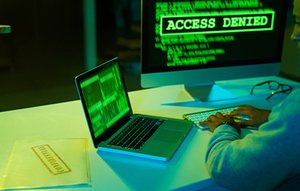Experts advise: Beware of card payments during the holidays
According to the latest Eurobarometer survey conducted in 2017, Slovaks are not very aware of the risk of theft or misuse of a payment card. Only 32% of respondents said they were concerned about security when paying online.
However, the misuse of the payment card also occurs quite often in the case of Slovaks. In the summer months, card payments on holidays at home and abroad are particularly risky. According to IT expert from Aliter Technologies Daniel Suchý, people should be especially careful not to give the card out of their hands. “Debit or credit cards contain all the information you need to make a payment. To reduce the risk of misuse of the card, it is recommended to remove the so-called CVV (“Card Verification Value”), or CSC (“Card Security Code”) code. Here, however, it is important to follow the conditions of use of the card. Before that, don’t forget to keep this code in a safe place – ideally in a secure password storage, e.g. on your phone. Without knowledge of this 3- or 4-digit code, the perpetrator will not be able to make an online payment,” says the expert.
It happens, not only on holidays abroad, that we hand over a payment card to a waiter or seller to make a payment and we have no eye contact, and we do not know where our card is. All you have to do is take a picture of it by phone, as all the data needed for payment are printed on it and it can be misused. “It often happens that the user has in his wallet, or in the common place with the payment card the information about the PIN to the card for making the payment. In such a case, the financial loss is almost certain,” explains Daniel Suchý, adding: “Even with a missing PIN code, however, there may be a leak. It is enough for someone to describe all the necessary data from your card, or read the data from the card with a scanner and then use it for online payment.” This is also why the expert recommends setting up two-factor authentication, ie the so-called second proof of payment. “It can be either in the form of SMS message with an additional code or, for example, authorization of payment in a secure banking application,” explains Suchý.
Source: PR

You might be interested
In what ways and why should people be wary of artificial intelligence (AI)?
Aliter Technologies in the Let’s Talk Business podcast for Startitup.
Although 2022 suggested that ransomware as an attack was on the wane, 2023 made it clear that it was the exception rather than the rule.
Peter Dostál emphasizes the need for cyber security implementation.




